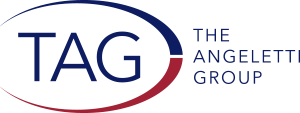If you are a fundraising professional you want to be certain of two things: 1) you’re getting the most in return for every dollar you invest in fundraising; 2) you successfully make the case to leadership for further investments in the advancement program by demonstrating the value of your fundraising with precise, analogous and justifiable information.
That is where Cost Per Dollar Raised (CPDR) comes in. CPDR is both a mathematical formula and a strategic performance gauge that nonprofits use to determine how the costs of fundraising compare to the organization’s bottom line.
Is there a CPDR Standard?
Is there a generally-accepted CPDR standard? In the past, nonprofit leaders have suggested that a 20 cent per dollar raised ratio is a good target. However, because organizations and institutions differ so greatly—to say nothing of the myriads of fundraising techniques—it is best to calculate your own outcomes over time and compare results on a regular basis.
The Basic Formula
Many nonprofits calculate CPDR by simply dividing expenses by revenue. For example, if you spent $25,000 on fundraising expenses, which include everything from staffing costs to marketing—activities and you raised $100,000, then your CPDR is 25,000/100,000 = .25, or 25 cents per dollar raised.
This calculation is rather basic, but it is merely the final computation once other metrics have been taken into account. What are those metrics? The Council for Advancement and Support of Education undertook a comprehensive Advancement Investment Metrics Study (AIMS) to measure Advancement expenses by colleges and universities. The AIMS sidebar linked here captures the expenditures that should and should not be counted within seven major advancement functions. Even for nonprofits that are not a college or university, the sidebar will help to identify your organization’s own categories and the expenditures that should and should not be counted.
Expanding the Data
While a low CPDR is desirable, it is important to note that each fundraising vehicle has its own distinctive value. For example, a particular campaign may be expensive but it brings you greater rates of repeated gifts or higher numbers of first-time donors. The following additional statistics should be tracked to decide a fundraising vehicle’s true value: 1) donor retention rate; 2) average annual gift; 3) new donor retention rate (first-time donors making a second gift); 4) returning donor retention rate (two or more gifts); 5) donor lifetime value (average annual gift).
Why CPDR Matters
As you can see from the AIMS sidebar, there are several categories to be tracked. It may seem tedious to take the time and effort to identify in detail these expenses but determining CPDR is greatly worth the effort. Fundraising professionals are often under constant pressure to cut back on costs. An accurately measured CPDR will help determine which fundraising campaigns are working and which need overhauling and it will help make the case to leadership and other funders that the program is operating effectively with the mission in mind.
In recent years, donors cite transparency as a key factor in their giving decisions. Institutional funders and individuals alike evaluate an organization’s CPDR, and charity evaluators are now featuring it as a key metric. Consider showing off your CPDR in marketing and grant writing materials if it demonstrates that you have carefully stewarded the dollars entrusted to your organization. Reporting a strong CPDR will show constituents that the organization is both accountable and transparent and will engender trust and continued support.
This handout outlines approaches to help make judgments about what expenditures to include and exclude when obtaining and reporting data.


